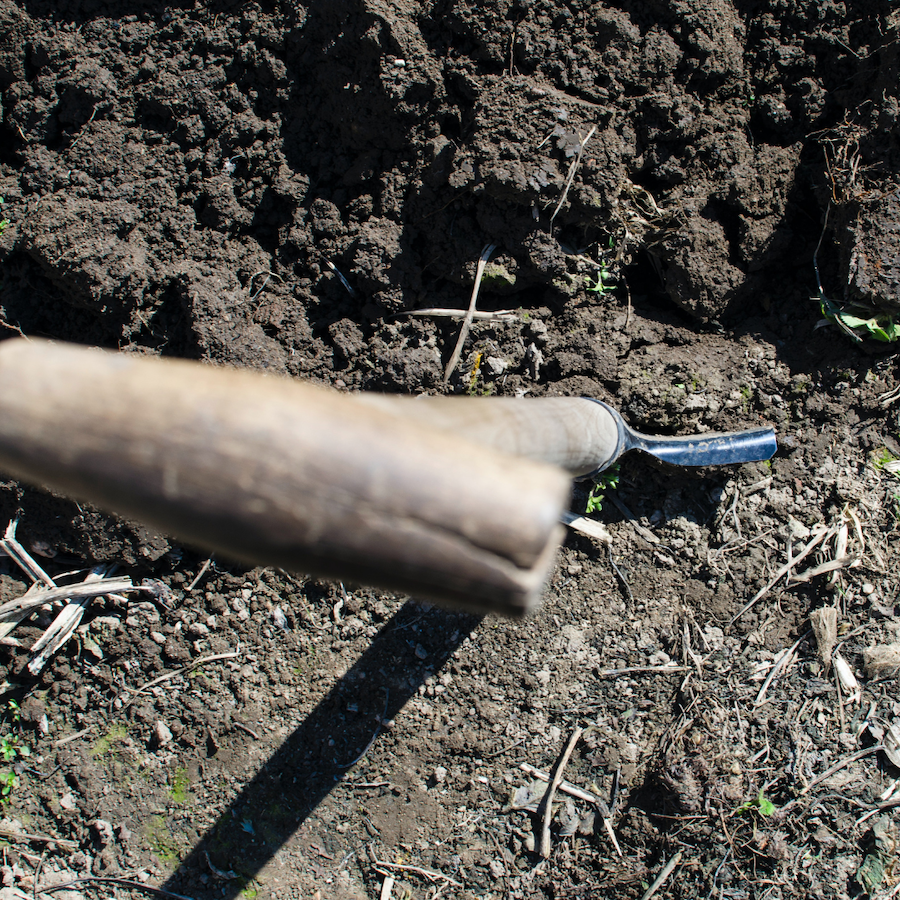The truth about the impact of your soil in DIY soil tests
Test your soil in the fall for a more bounteous spring
As our lawn and garden’s growth cycle slows during the fall season, it’s a great time to start planning for new growth in the spring. Fall and early winter present a great opportunity to get ahead of the game and lay the foundation for a successful spring growth.
Why should I test my soil?
Unfortunately, not all soil is the same. Nutrient levels and pH can vary widely depending on your region, climate, and the presence of fertilizers. You could determine soil health with the old trial-and-error technique, but who likes to gamble with their lawn and garden? There are easy DIY tests available to take the guesswork out of soil testing and set you up for success.
Most plants do well in a neutral pH range of 6.0-7.0 and this pH level plays a big role in nutrient uptake. You can add loads of fertilizer, but if your pH range isn’t ideal, your plants won’t be able to use those nutrients. Save yourself a lot of money and disappointment by establishing your soil’s needs first.
Other nutrients that soil tests measure are nitrogen, phosphorus, and potassium.
Similar to our composting article, nitrogen is required to ensure things grow green, and leafy. To move the nitrogen levels in your soil add fertilizer, raw fertilizer should be added in the fall so it can breakdown to usable elements by spring and the next year of planting.
Phosphorus is required for strong roots, flowers, and fruits. Phosphorus helps in absorption of nutrients and minerals. Rock powders are used to increase the phosphorus levels in soil.
Potassium works to regulate water intake and flow within the plants, increasing ability to flower, fruit, and resist disease. Granite dust works well to increase potassium levels in soil.
What are some signs that my soil needs correcting?
Discolored patches of grass or plant leaves
Yellowing grass or leaves can indicate low nitrogen levels, while abnormally purple leaves signal low phosphorus.
The presence of moss
Moss likes acidic soil, so if it makes an appearance in your lawn or garden, it might be a good idea to check your pH.
Low fruit production
If your fruit-producing plants have a low or nonexistent yield, this could indicate an excess of nitrogen.

When should I test my soil?
You can test your soil at any time, but it might be best to do this during the fall so you can address any problems ahead of the spring growth cycle. If you must make any big corrections to your soil pH or nutrient level, you can test again in the spring before planting anything new. Otherwise, you can test once a year or even wait every three years if you don’t see any problems with growth.
DIY Tests
There are a few DIY soil tests that you can conduct at home without sending out for one of the various testing kits. They are testing your soil texture, spoil pH, and overall soil health.
Peanut Butter Jar Test
This DIY soil test focuses on the type of soil you have. Usually what is considered “healthy” soil consists on 20% clay, 40% silt, and 40% sand. This test will take up to 1 hour to complete.
- Take an empty peanut butter jar (mason jars also work well for this test), you will also need the lid to the jar and a ruler. Dig at least 6 inches down and get enough soil from that level to fill the jar 1/3rd, or 1/2 full. Fill the rest of the jar with water, allow for the water to seep into the soil.
- Next, put the lid on and shake for 3 minutes.
- Once the jar is all shaken, set it on a level surface. Using your watch, time 1 minute, then take the ruler to measure the sediment at the bottom of the jar and write the number down. This is the amount of sand in your soil.
- At the 4 minute mark, measure the sediment again and write the number down. Subtract the level of sand in your soil to get the amount of silt in your soil.
- After 24 hours take another measurement. Take another measurement of the sediment. Subtract the number from the second reading in step 4, this will give you the amount of clay in your soil.
Take into account the type of soil that you have to decide on what types of plants will grow well. Soil that is high in sand will be well draining. Soils that are high in clay and silt have trouble absorbing water, but they do well retaining water once they’re wet.
Pantry Test
This DIY test will focus on the level of acidity or alkalinity within your soil. What you will need is 1/2 c vinegar, 4 tablespoons soil, distilled water, 1/2 c baking soda and 2 bowls. The test is run in 2 different rounds.
- In a bowl add 2 tablespoons of soil to 1/2 c vinegar. If this reacts, the soil is alkaline.
- In a bowl add 2 tablespoons of soil to enough distilled water to moisten the soil. Then add the 1/2 c baking soda. If this reacts, the soil is acidic.
If there isn’t a reaction with either DIY soil test, the soil is neutral, which is a pH level of 7. A lot of plants do want a slightly acidic soil, however, too much acidity or alkalinity, you’re looking at nutrient deficiency or toxicity within your soil.
Earthworm Test
This test is probably the simplest of the DIY soil tests listed here. You’re looking for earthworms. This test is best conducted in the spring when the soil temp is well above 30° and somewhat moist. You want to dig up a cubic foot of soil, place it on a solid surface, move the soil around and start counting worms. Healthy soil tends to have around 10 worms per cubic foot.
If you have less than 10 worms, your soil is constipated. Adding compost or fertilizer will improve the structure of the soil, releasing more nutrients and increase the microbial activity of your soil.
Other types of testing kits
If you aren’t satisfied, or if you’re interested in more detail in your DIY soil testing, other kits to help diagnose issues include:
pH Strips
pH strips are a quick and easy way to test soil pH before addressing any nutrient corrections. Be sure to follow the manufacturer’s instructions and use distilled water for the test. Tap water has additives that can influence the test.
Digital or Analog Meters
Digital or analog meters are easy to use and some provide more information than just the pH level. These meters can give you the moisture level of the soil and the amount of sun exposure. This way, you can determine the best area to plant depending on drainage and sunlight requirements.
Home Test Kits
Home test kits are more extensive and perfect for gardeners. In addition to pH level, these kits test for a wide range of nutrients in your soil. These comprehensive tests are more time consuming, but you can turn this into a fun chemistry experiment for little helpers. Some of these kits come with lists of nutrient requirements by plant – another great resource for gardeners.
Mail-in Soil Test Kits
Mail-in soil test kits are analyzed by professional labs and give you the most accurate results. The lab tests your pH and nutrient levels, then provides recommendations for adjustments. Some labs offer a custom fertilization plan for your specific needs. This option might be the most expensive, but it eliminates human error and guess work from your treatment plan.

